Darrah Steffen's Blog, page 5
April 19, 2022
Giants
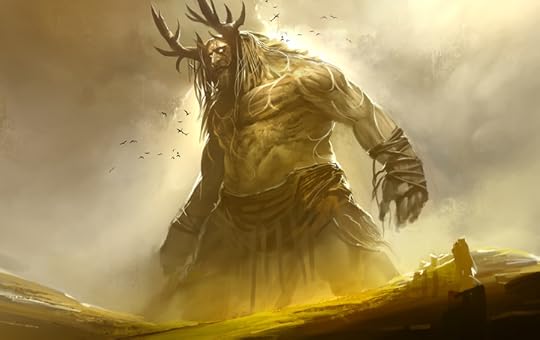
A giant is a huge mythical, humanoid being. They were often savage creatures, prone to cannibalism and stupidity. Heroes defeated these creatures through wit rather than strength.
Stories of these creatures can be found throughout Greek, Roman, Norse, and European mythology. So what inspired these massive creatures?
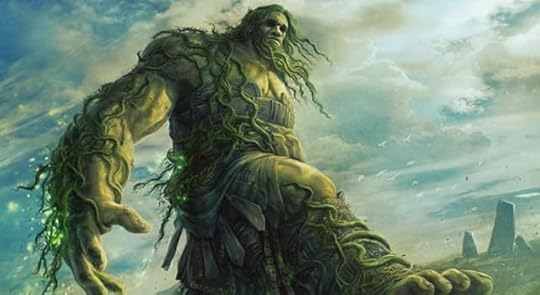
In folklore, giants are typically human-like in appears but are known for their size and strength. The word giant first appears in 1297 from Robert of Gloucester’s chronicle. He took the work from the Greek gigantes.
Fairytales such as Jack and the Beanstalk have depicted these animals as violent, eating humans or livestock. In more modern tales such as Gulliver’s Travels and BFG, the giant appears as intelligent and friendly.
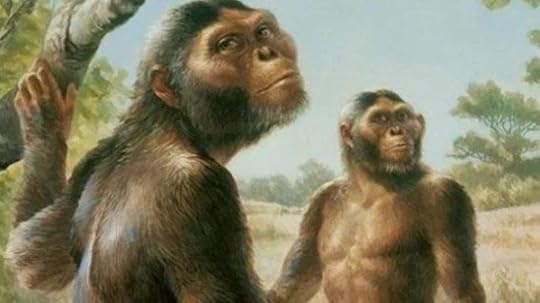
Some scientists believe that the origin of the giant belongs to an extinct genus of non human apes called Meganthropus. The group lived during the Pleistocene (2.5 mya to .01 mya) in Indonesia.
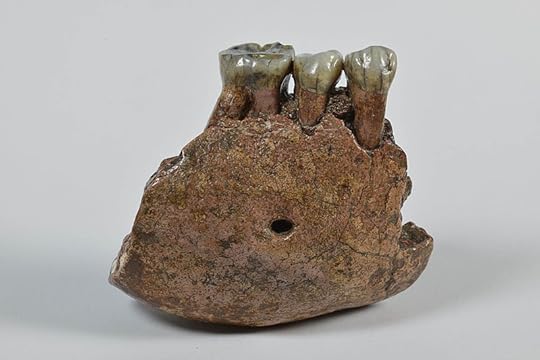
Meganthropus is known from a series of large jaw and skull fragments and isolated teeth. These fragments describe a humanoid creature much larger than humans today.
Meganthropus is though to have been around 2.5 m tall and weigh up to 275 kg, if scaled to the proportions of an erect man.
These fossils were discovered in the 1940’s and have been hotly debated since. For many years, scientists did not consider Meganthropus a valid taxon, due to lack of evidence. The consensus was it was a form of ape, but the measurements were wrong.
However, in 2019, study of the tooth morphology found Meganthropus a valid genus of non human apes, closely related to others from the area.
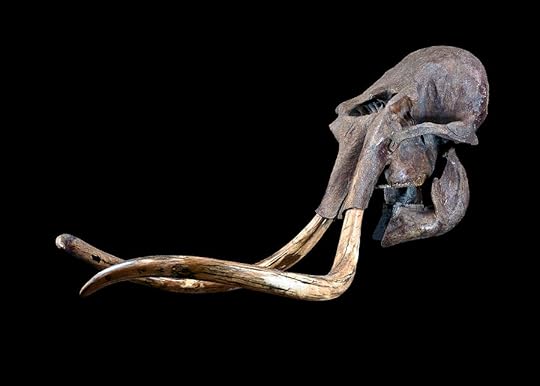
Other researchers believe that stories of giants came from finding mammoth teeth, shed around the world.
Mammoths are a group of extinct proboscideans. They lived during the Pliocene to the Holocene (5- 0.0037 mya). These animals lived around the world with fossils appearing in Africa, Europe, Asia, and North America.
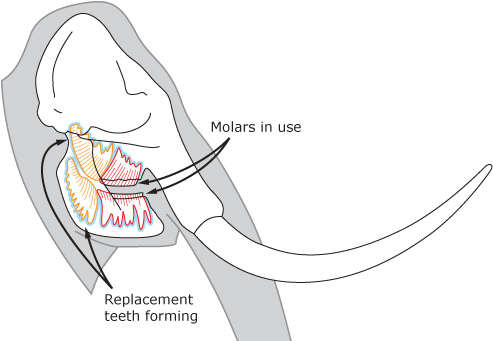
Mammoth teeth are interesting because they only had six teeth for their entire lives. Unlike humans, these animals did not follow the pattern of “milk” teeth and “adult” teeth. Nor did they have traditional “tooth battery” like sharks.
Once a tooth is worn down from grinding, a new tooth grows behind it. The new tooth slowly moves forward and pushed the old tooth out. This leaves behind a fresh set of ridges for grinding food.
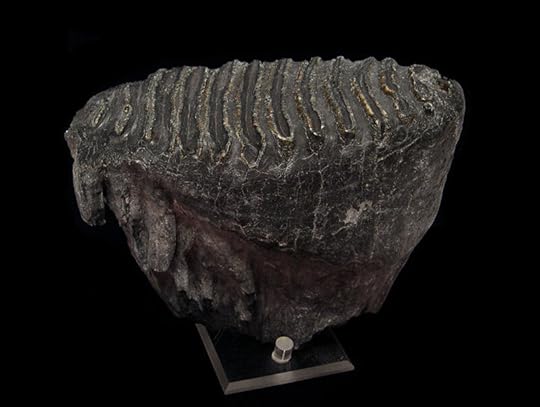
The replacement process continues until the sixth tooth is in place. This happens when the mammoth is about 30 years old. The mammoth uses these teeth for the rest of its life. The average lifespan is thought to be around 70 years.
Once these teeth are worn down, there are no more replacement teeth. Without teeth, the mammoth can no longer eat and starve. Any teeth that were shed during the mammoth’s lifetime were dropped and left behind. Possibly for people to find.
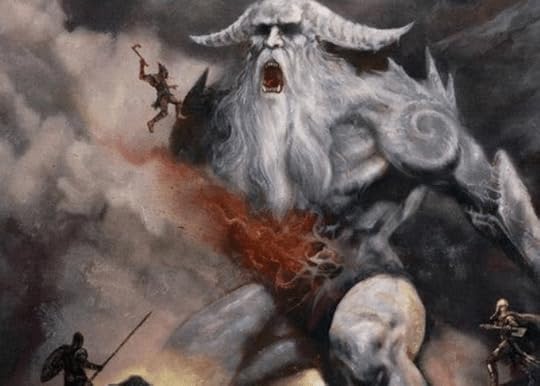
The debate on the origins of giants is still contested. Whether it was inspired by a giant ape fossil or the dropped teeth of mammoths, this myth has captured our imaginations. It has continued to change and grow over the years and is sure to last.
Sources:
Bahn, Paul G.; Lister, Adrian (1994). Mammoths. New York: Macmillan USA.
Blaxland, B. Hominid and hominin – what’s the difference? The Australian Museum. Retrieved April 19, 2022, from https://australian.museum/learn/science/human-evolution/hominid-and-hominin-whats-the-difference/?fbclid=IwAR1CTYlf-ISLsH-15Ig2LkuBXs_OjCyxQiO8c__0AkszlP07HMveb4moeTw
Children’s Museum of San Jose (Ed.). Did Mammoths Lose their Teeth. Mammoth Discovery. Retrieved April 19, 2022, from https://www.cdm.org/mammothdiscovery/toothloss.html?fbclid=IwAR0Sua5QjkH81yKQDHgm_l2VkZaQJCeRephHHrIdFHz_jbrWGDrnL-Afgsk
Encyclopædia Britannica, inc. (n.d.). Giant. Encyclopædia Britannica. Retrieved April 19, 2022, from https://www.britannica.com/topic/giant-mythology
Schäfke, Werner (2015). ″Dwarves, Trolls, Ogres, and Giants″. In Albrecht Classen (Ed.): Handbook of medieval culture. Fundamental aspects and conditions of the European middle ages, vol. 1. Berlin: de Gruyter, pp. 347–383.
April 4, 2022
The Ziphius
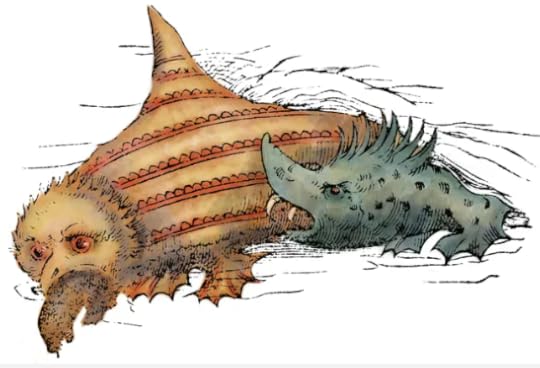
In Medieval folklore, the Ziphius was a monstrous nautical creature said to attack ships in the northern seas. It possessed the body of the fish and the face of an owl, complete with large eyes and a beak. It is said to be able to cleeve the hull of a ship like a blade.
This creature sounds terrifying, but what could have inspired it?
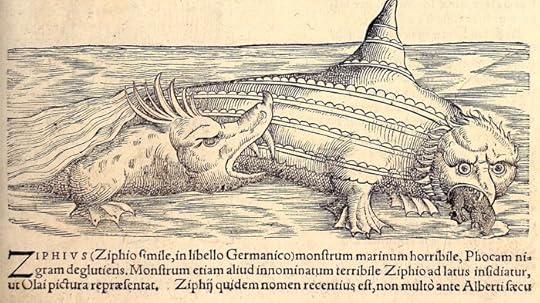
In the 16th Century, Swedish writer Olaus Magnus illustrated the animal on his Carta Marina and described the Ziphius as:
“Because this Beast is conversant in the Northern Waters, it is deservedly to be joined with other monstrous Creatures. The Sword-fish is like no other but in something, it is like a Whale. He hath as ugly a head as an Owl: His mouth is wondrous deep, as a vast pit, whereby he terrifies and drives away those that look into it. His Eyes are horrible, his Back Wedge-fashion, or elevated like a sword; his Snout is pointed. These often enter upon the Northern Coasts, as Thieves, and hurtful Guests that are always doing mischief to ships they meet, by boaring [sic] holes in them, and sinking them.”
To Magnus, mythical creatures were just as real as the familiar land animals. He included an assortment on his maps, furthering their stories and instilling fear in sailors.
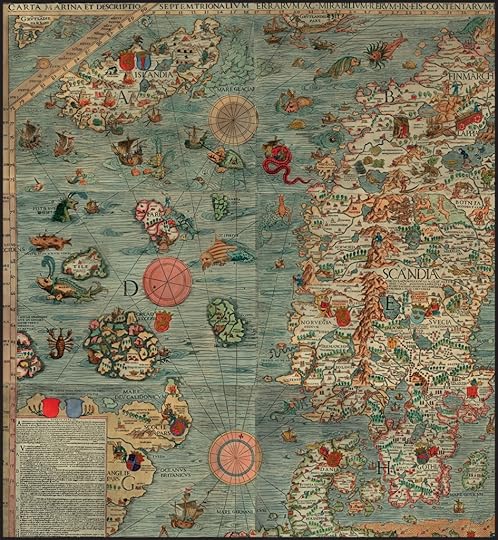
The name Ziphius gets its name from the Greek word xiphias meaning sword. The creature was named for the large dorsal fin seen on the back of the creature, and its “ability to cut ships in two and sink them.”
But what is behind these stories?
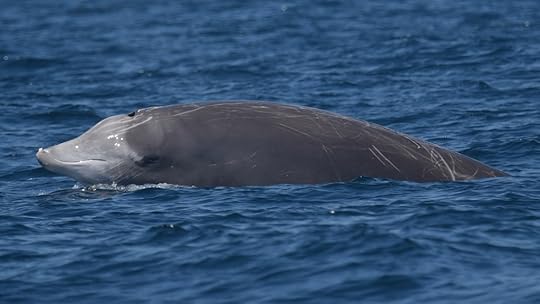
Historians tend to believe that what Magnus and others saw in the ocean were Cuvier’s Beaked Whales. They are found in oceans worldwide and can reach up to 7 m long and weigh up to 3 tons!
The head is long and slopes into the body with an upturned jaw that makes it appear to be smiling. Beaked whales are often seen with linear scratches and oval scars. These are thought to be caused by the sharks and parasitic lampreys that attach to the animal.
As they grow older, the face develops a whitish coloration with dark-colored patches around the eyes. This happens especially in males.

Cuvier’s Beaked Whales rarely breach. As they swim, their head and body will roll high out of the water. preparing for a deep, vertical dive, they may arch their back more than normal and usually display their flukes.
Cuvier’s beaked whales are capable of diving up to at least 3,300 feet for 20 to 40 minutes to opportunistically feed on mostly cephalopods and sometimes fish and crustaceans. The deepest known dive for a Cuvier’s beaked whale was almost 3000 m and the longest known dive lasted 222 minutes!
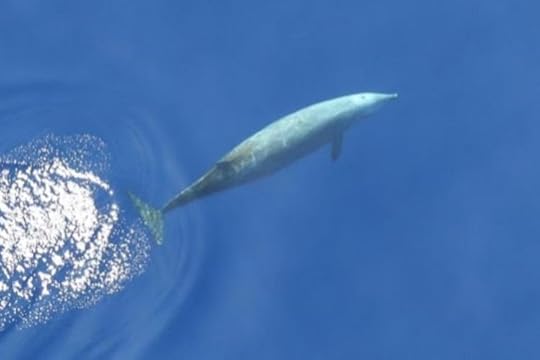
Today these animals are protected under the Marine Mammal Protection Act. While their population is stable, their main threats are ocean pollution. They have been found with plastic in their bodies. They have also become entangled in fishing gear in the Caribbean and near Indonesia.
This species is also sensitive to underwater sounds and anthropogenic noise. Strandings of this species in the Bahamas, Canary Islands, and in the Caribbean and Mediterranean Seas have been associated with active naval sonar. These deep-diving animals become confused and are no longer able to feed, communicate, or navigate in the ocean.

The Cuvier’s Beaked Whale is most likely what inspired the myth of the Ziphius, with its pale face and dark eye patches. This would invoke the imagery of owls across Europe with their white facial disks and dark eyes. Their deep-diving habits make them rare sites for humans, especially during the early days of exploration.
The link between the Ziphius and Cuvier’s Beaked Whale is so established that the scientific name of the whale is Ziphius cavirostris.
Sources:
Grzimek, Bernhard (2003). Hutchins, Michael; Kleiman, Devra G.; Geist, Valerius; et al. (eds.). Grzimek’s Animal Life Encyclopedia, Vol 15, Mammals IV (2nd ed.). Farmington Hills, MI: Gale Group.
“Cuvier’s Beaked Whale (Ziphius cavirostris)”. NOAA. 15 January 2015.
March 31, 2022
2022 Pop Sugar Reading Challenge- Update!
For the past 8 years, Pop Sugar has put out their annual reading challenge. The challenge provides 40 prompts that you have to find books to fit (i.e. a book with silverware on the cover). It is up to you to decide how the book fits.
It is a great way to connect with other readers and people who love books! This year’s challenge is up! You can find it here.





A book about a secret: Dear Mrs. Bird by AJ Pearce
4 Stars
During WWII in London, Emmeline Lake takes a job as a reporter. When she starts, she finds out she is actually working as a writer for an advice columnist. Her new boss, Mrs. Bird, only writes back to those she finds “morally upstanding.” In secret, Emmy writes back to women she thinks are in most need of help.
A book set during a holiday: Winter of the Witch by Katherine Arden
5 Stars
This is book 3 in the Winternight Trilogy. Moscow has been struck by disaster and looking for someone to blame. Vasya finds herself alone. The Bear returns, determined to spread chaos. Vasya must decide if she will fight with the Bear or reunite with the Winter King to save Russia and the magical world she treasures.
A book set in “Sister Cities”: Listless in Turkey by Onia Fox
2 Stars
Jessica’s personal life unravels in the spring of 2016. To put some order to her chaotic life, she writes a list of what she plans to do with her future and sets off to travel the world.
A book with Tiger in the Title: The Night Tiger by Yangsze Choo
4 Stars
A historical novel about a dancehall girl and orphan boy whose fate entangle over an old Chinese superstition about men turning into tigers. Ren must find his master’s missing finger before 49 days pass. Ji Lin finds a mummified finger in the pocket of stranger at work.



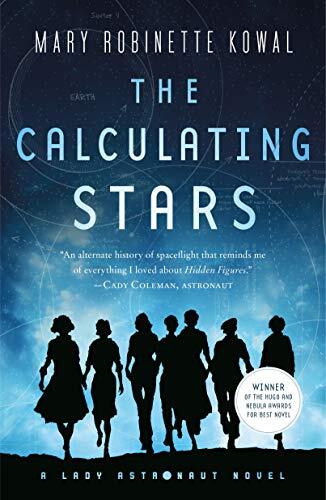
A book about the afterlife: Lincoln in the Bardo by George Saunders
3 Stars
Willie Lincoln dies in February of 1962. He finds himself in a strange purgatory, where ghosts mingle, gripe, commiserate, quarrel, and enact strange acts of penance. Within this transitional state a struggle erupts of Willie’s soul. He must learn to accept his death in order to move on.
A book with a protagonist who uses a mobility aid: The Witch Elm by Tana French
3 Stars
Toby has lived a charmed life until he is attacked by burglars, leaving him struggling to recover. He takes refuge at his family’s ancestral home to care for his dying uncle. While there, a skull is found inside the elm tree. And Toby must face the fact his past may not be what he always believed.
A book by a Latinx author: Mexican Gothic by Silvia Moreno-Garcia
5 Stars
After reading a frantic letter from her cousin, begging for rescue, Noemi heads to High Place, unsure of what she will find. Noemi is an unlikely rescuer as a glamorous debutante, more interested in the next party than the family business. As she becomes more entranced by High Place and the people inside, she may find it impossible to ever leave this house behind.
A Hugo Award Winner: The Calculating Stars by Mary Robinette Kowal
5 Stars
On a cold night in 1952, a huge meteorite falls to the earth and obliterates much of the east coast. The ensuing climate disaster will soon render the earth inhospitable for humans. This threat calls for a radically accelerated effort to colonize space. Elma York is experienced as a WASP pilot and mathematician makes her an ideal candidate to be an astronaut. But an she convince everyone she is suitable?
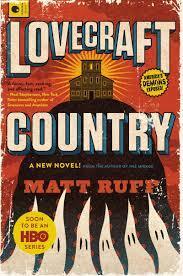


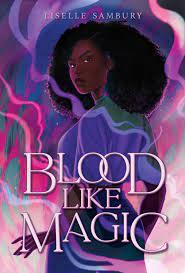
A social-horror book: Lovecraft County by Matt Ruff
3 Stars
In Chicago 1954, Atticus Turner discovers his father missing. He embarks on a road trip to New England to bring him home. During the journey, they encounter both mundane terrors of white America and malevolent spirits that seem straight out of Lovecraft stories.
A book that takes place during your favorite season: The Final Girl Support Group by Grady Hendrix
3 Stars
In horror movies, the final girl is the one who is left standing. But after the sirens fade and the audience moves on, what happens to her? These girls have their support group. But when one of them go missing, Lynette’s fears are realized. Someone knows about the group and is determined to take their lives apart again. Piece by piece.
A Sapphic book: Honey Girl by Morgan Rogers
4 Stars
Grace Porter has done everything in her life to be perfect. After completing her PhD in astronomy, she lets her hair down with a trip to Vegas to celebrate. But there she drunkenly marries a girl whose name she doesn’t know. After that her life is up in the air. Should she try to get to know her new wife? Should she continue on her father’s rigid plan?
A book about witches: Blood Like Magic by Liselle Sambury
4 Stars
After years of waiting for her trial to gain her powers, Voya fails. But she is given a second chance. If she kills her first love, she will gain her magic. If she fails, everyone in her family will be stripped of their power. The only problem is Voya has never been in love. So she needs to find the perfect guy, fast.


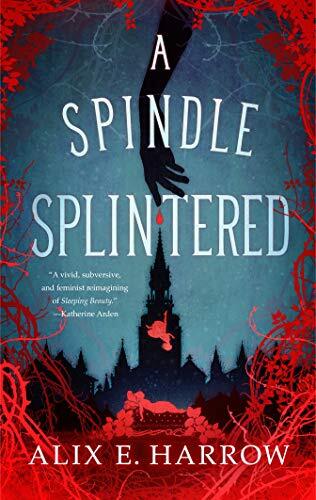

A book with cutlery on the cover: Arsenic and Adobo by Mia P. Manansala
4 Stars
When Lila Macapagal moves home, her life seems to be following all the typical rom-com tropes. She is tasked with saving her aunt’s restaurant and fending off well meaning aunties. But when someone dies in her family restaurant, she becomes the prime suspect. Can she figure out the real killer before it is too late?
A #OwnVoices SFF book: Riot Baby by Tonchi Onyebuchi
3 Stars
Ella and Kev are siblings gifted with extraordinary powers. Their childhoods are defined and destroyed by structural racism. But their futures may alter worlds.
A book with an onomatopoeia in the title: A Spindle Splintered by Alix E. Harrow
3 Stars
Zinnia Gray is afflicted with a rare condition and most people don’t live past 21 years old. Her best friend is determined to make her last birthday special with a full Sleeping Beauty experience. When Zinnia pricks her finger, she finds herself transported into another world with another princess, just as desperate to escape her fate.
A #BookTok recommendation: The Invisible Life of Addie LaRue by V.E. Schwab
5 Stars
In a moment of desperation, Addie makes a deal with the devil to live forever and is cursed to be forgotten by everyone she meets. That is until 300 years later, she stumbles into a bookshop and meets a young man who remembers her name.
March 21, 2022
Snake Stones

In Whitby, England, there is a story about a Saxon Abbess named Saint Hilda. She was charged with founding an abbey in Whitby, but first, she had to rid the region of an infestation of snakes. Snakes were considered the animals of the Devil and would negatively affect any congregation that would reside in the abbey. So Hilda cast a spell that turned all the snakes of Whitby to stone. And she threw them from the cliff tops.
While this is considered one of the more famous stories, it is not the only one. St. Cuthbert was said to have cast a powerful beheading curse on all these snakes. In southern England, St. Keyna was a devout British virgin who turned the snakes to stone through the power of prayer.
But what are these objects?
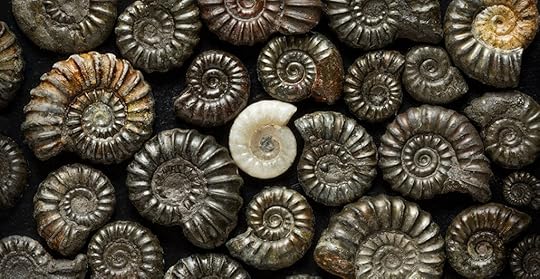
We now know that Snakestones are an extinct cephalopod related to squids, which lived in the seas during the Mesozoic Era (201-66 mya). The “snakestone” is the hard external shell fossilized after death.
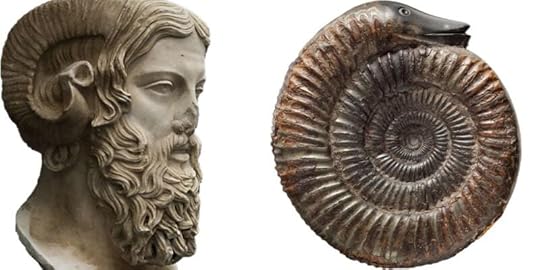
The name ammonite was inspired by the spiral shape of their fossilized shell with resembles tightly coiled rams’ horns. The early Greeks saw ammonites as sacred symbols associated with the horned god, Ammon. They called the fossils “Cornu Ammonis” or horns of Ammon.
Ammonites were often used as protection from snakebites and cures for blindness and barrenness. The ancient Romans believed that sleeping with pyritized ammonites under their pillow could help the dreamer predict the future. German farmers might place an ammonite in an empty milk pail to persuade their cows to lactate.
So do these creatures have these prescribed powers?
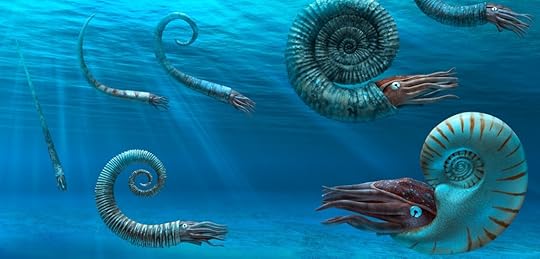
Ammonites are closely related to living octopodes, squids, and cuttlefish. They had a hard outer shell in which the soft body lived. Ammonites came in many different forms with straight, coiled, and “knotted” shells.
Because their soft bodies are rarely preserved, little is known about their way of life. These animals most likely lived out in the open water and were good swimmers. They most likely fed on plankton. There have been indications of ink sacs preserved, so they may have avoided predation by squirting ink.
The shell was created as the creature grew. As it grew larger, smaller segments of the shell were walled off and the animal could maintain its buoyancy by filling them with gas.
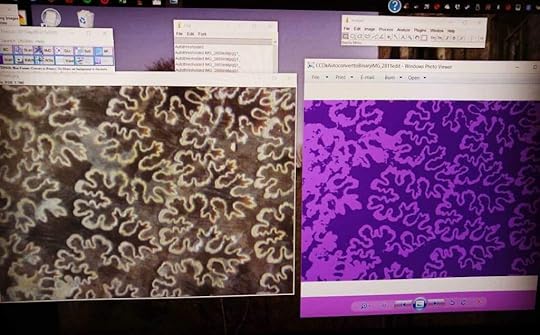
A defining feature of Ammonites is their suture pattern. A suture is an immovable joint, typically between two bones. As ammonites are invertebrates, the sutures are found on its shell. Ammonite sutures are very complex, with many subdivisions within each line.
Research shows that these complex suture patterns may be used to help the animals adjust to changing water pressure. The multiple subdivisions allow the pressure to be pushed along multiple points in the shell instead of a single point.

The beauty of these fossils have captured the human imagination since the Stone Age and given rise to many myths. To reinforce the legend of their origin and make them saleable, Victorians even cared heads onto the fossils. This has helped the story endure.
Sources:
Jorgensen, Darrah. 2017. The Relationship Among Suture Complexity, Shell Form, and Stratigraphic Formation In Ammonites Of The Western Interior Seaway. Unpublished Thesis.
https://www.nhm.ac.uk/discover/snakestones-ammonites-myth-magic-science.html
March 9, 2022
Happy Book Birthday!

“Rise of the Dragon Queen” was released one year ago today! To celebrate, I am hosting this giveaway.
I will be giving away a free copy of “Rise of the Dragon Queen,” a Rise of the Dragon Queen mug, and a Believe in Magic magnet!
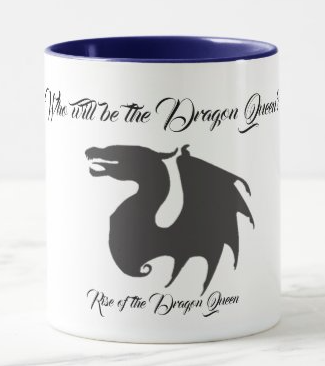


Enter to win today!
Entry form __ATA.cmd.push(function() { __ATA.initDynamicSlot({ id: 'atatags-26942-6228f8497816b', location: 120, formFactor: '001', label: { text: 'Advertisements', }, creative: { reportAd: { text: 'Report this ad', }, privacySettings: { text: 'Privacy', } } }); });March 7, 2022
The Dobhar-chu
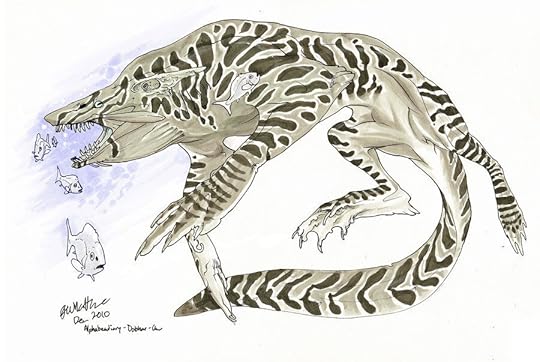
The Dobhar-chu is a creature in Irish folklore. This creature is a lake monster that has inhabited the lakes of the British Isles since ancient times. It is said to resemble a giant otter crossed with a hound. The Dobhar-chu is said to be the size of a crocodile.
The Dobhar-chu is a blood-thirsty-gruesome creature that lives in the deep waters of lakes and seas and can travel on sea or land. It is said to be aggressive toward humans and animals, typically seen in mated pairs. Some legends even consider the Dobhar-chu to be the immature form of the Loch Ness monster. But where did this creature come from?
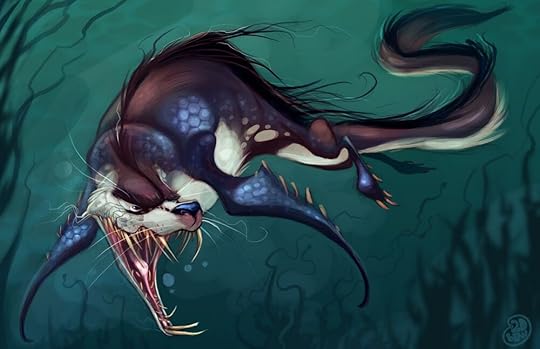
The word Dobharchú is an obsolete Irish word for otter. Dobhar is a rarely used form of water and Cú means hound. Together the word means “Water Hound” to describe the basic look of the animal.
Sightings date back to 1684. One such siting was recorded in the 1896 edition of The Journal of Royal Society of Antiquaries of Ireland. A Miss Walkington described seeing a “wolf-dog-fish.” A few months later A Mr. Chicester Hard said he heard rumors of a king of all lakes and father to all otters. Some legends consider the Dobhar-chu to be the immature form of the Loch Ness monster.
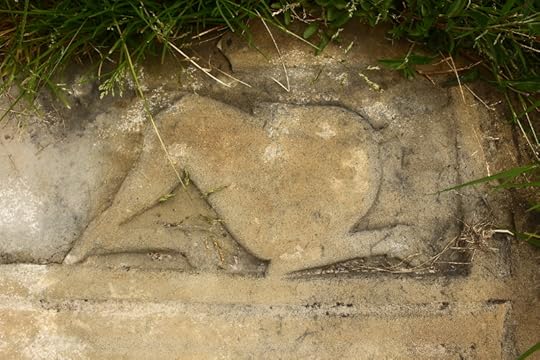
The most famous siting was in September of 1722. A woman known as Grace Connolly had gone down to the river to wash some clothes. She was attacked and killed by a monster that emerged from the water.
Her husband Terence found her body with the monster asleep over the body. Terence killed the animal. It is said the animal let out a high-pitched whistle which called to its mate. A second Dobhar-chu emerged from the lake pursuing Terence.
After many miles of chase, Terence was able to behead the animal. Grace Connoly was put to rest with a carving on the Dobhar-chu on her tombstone.
What could have attacked this poor woman?

Sea lions are pinnipeds with the ability to walk on all fours, and a big chest and belly. They have external ears and their faces superficially resemble otters. These animals live in the subarctic and tropical waters in both the Northern and Southern Hemispheres, excluding the Altlantic Ocean.
A male California sea lion can weigh on average 300 kg and grow to 1.8 m long. The largest Steller’s sea lion can weigh up to 1000 kg and grow up to 3 m long.
Sea lions tend to rest on earthly land ice habitats. They raise their young and tend to group in brooding pairs. When the breeding season begins, the males establish territories. Males become especially territorial around the ages of 9-13. While sea longs are polygamous, they are fiercely protective of their mates during the mating season.
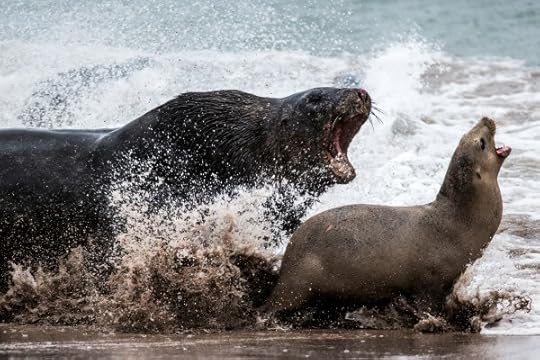
Sea lion attacks on humans are rare, but when humans come within 2.5 m of these large animals it can become unsafe. During mating season, males are incredibly territorial. They see any other animals as a possible threat.
In 2007 in Western Australia, a sea lion leapt from the water and mauled a 13-year-old girl surfing. A marine biologist suggested that the sea lion saw the girl as a toy to be played with. Attacks in the San Francisco Bay area have been characterized as territorial acts.
But how did a sea lion make its way to Ireland?

It is possible a mated sea lion pair was resting on an ice floe and ended up in unknown territory. This has happened as recently as 2021.
In March 2021, a walrus was spotted on the western shore of Ireland. The animal fell asleep on an iceberg in the Arctic and floated down to Ireland while it slept.
This walrus traveled over a thousand miles and spent time on the Irish coast until he was able to make his way back to the Arctic.

It is possible this is what happened to inspire the Dobhar-chu. A mated pair of sea lions fell asleep on an ice floe that made its way down to the Irish coast. As it was mating season, the male was particularly aggressive.
The woman – Grace Connolly – was an unfortunate casualty of the animal’s aggression as he sought to protect his territory.
Sources:
Tohall, Patrick (1948). “The Dobhar-Chú Tombstones of Glenade, Co. Leitrim (Cemetries[sic] of Congbháil and Cill-Rúisc)”. The Journal of the Royal Society of Antiquaries of Ireland. 78 (2): 127–129.
von Radowitz, John (November 10, 2017). “Does prehistoric otter explain Dobhar-chú myth?”. Independent.
Jean-Paul, Orsini (1 January 2004). “Human impacts on Australian sea lions, Neophoca cinerea, hauled out on Carnac Island (Perth, Western Australia): implications for wildlife and tourism management”. researchrepository.murdoch.edu.au.
Jean-Paul, Orsini (1 January 2004). “Human impacts on Australian sea lions, Neophoca cinerea, hauled out on Carnac Island (Perth, Western Australia): implications for wildlife and tourism management”. researchrepository.murdoch.edu.au.
https://www.travelandleisure.com/animals/walrus-wakes-up-in-ireland
https://www.irishcentral.com/roots/irelands-hound-dobhar-chu
February 14, 2022
The Phoenix
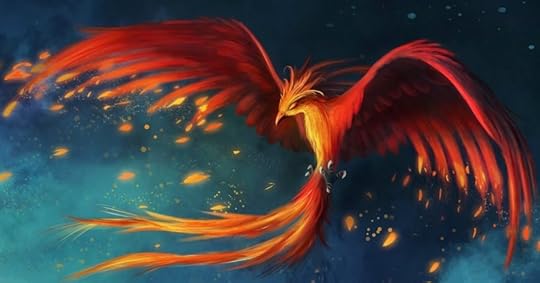
The Phoenix in classical mythology is a fabulous bird associated with the worship of the sun. It is known for its cyclical regeneration. The phoenix obtained new life from the ashes of its predecessor.
But where did this firey creature come from?
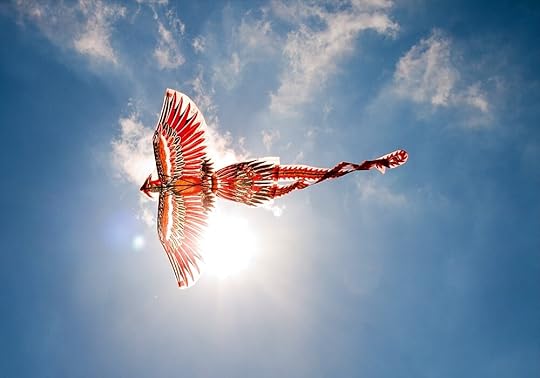
The phoenix can be traced back to ancient Egypt. The Egyptian phoenix was said to be the size of an eagle, with brilliant scarlet and gold plumage and a melodious cry. Only one phoenix existed, as it continued to be born again. As it approached the end of its life, the phoenix fashioned a nest of boughs and spices, set it on fire, and was consumed in the flames. From the pyre, spang the new creature which flew to Heliopolis- the City of the Sun – to the temple of the sun god Re.
The Egyptians associated the phoenix with immortality, and that symbolism had a widespread appeal. It was adopted into other religions, including Islam and Christianity.
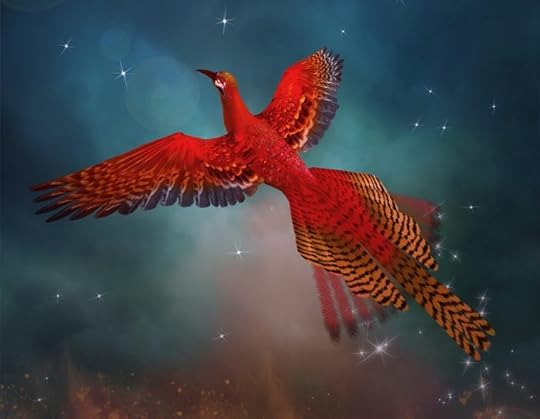
In Christianity, the phoenix was compared to undying Rome, and it appeared on the coins as a symbol of the Eternal City. It was also interpreted as an allegory of the resurrection.
In Islamic stories, the phoenix was identified as the “anqā,” a mysterious bird that was originally created by God with all perfections, but thereafter became a plague and was killed.
It is in these stories that we start to see where the stories of the phoenix were inspired.
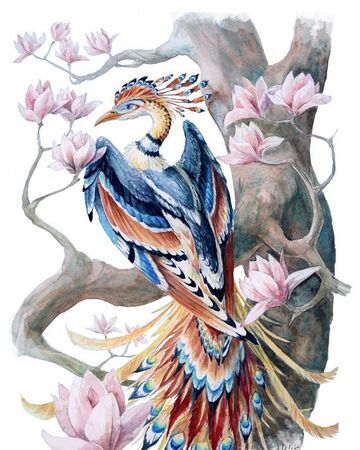
The word “anqā” is the feminine form of ʾaʿnaq meaning “long-necked. This implies the animal had a long neck such as a heron or crane.
The anqā was described as very beautiful and colorful with a long neck and four pairs of wings. It was also known for the whiteness in its neck. It is said the animal eats nothing except elephants and large fish.
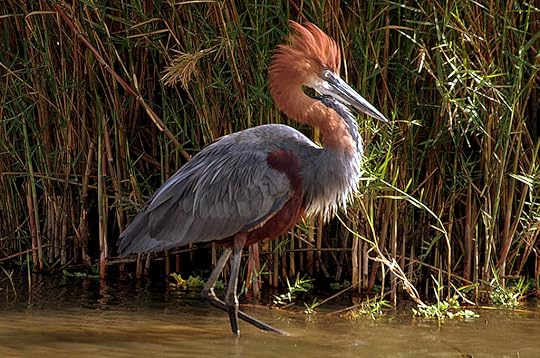 Goliath Heron
Goliath Heron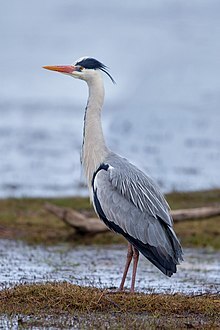 Grey Heron
Grey HeronIt is likely the phoenix is based on a combination of the Goliath Heron and the Grey Heron. Both animals are native throughout Europe and Asia and into parts of Africa. Birds of the wetlands, they can be seen mainly around lakes, rivers, ponds, and on the sea coast. They feed on aquatic animals, such as fish and frogs.
The Goliath Heron, also known as the giant heron, is the world’s largest living heron. This animal stands 1.5 meters and weighs up to 5 kg. The animal is covered mainly in grey feathers. The head and chest are chestnut. The chin, throat, foreneck, and upper-breast are white with black streaking.
The Grey Heron stands up to a meter tall and weighs up to 2 kgs. They have a white head and neck with a broad black strike extending above the eye into a feathered crest. The body and wings are blue-grey with black underneath. The beak is a sharp pink.

In Egyptian tradition, herons were considered a manifestation of the resurrected Osiris. The bird is often shown perched in his sacred willow tree. The heron hieroglyph was used to Re directly. It has always had close ties to the sun.
The heron was also closely associated with Nile and the creation. It was often seen on isolated rocks of the islands and the chaos that flooding could cause. This association could be where Islamic tradition associated the phoenix with plague.
The word phoenix originates from the Greek word phoinīx. The word was borrowed from the West Semitic word for madder, a red dye made from the rubia plant. The word Phoenician (modern day Lebanon) appeared to be from the same root, meaning “those who work with red dies.” Therefore, it is believed that phoenix means “The Pheonician bird” or “The red bird.”
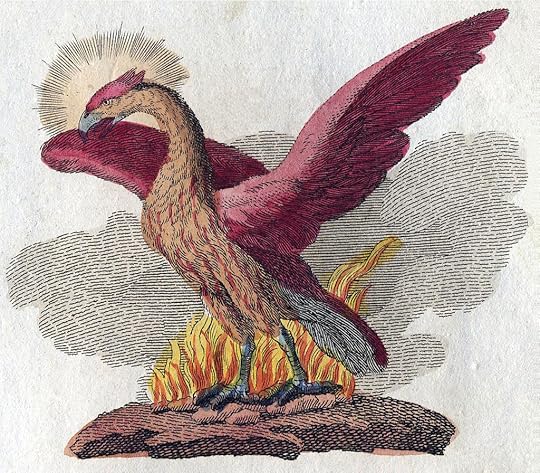
The legend of the phoenix has gone through several iterations as it passed through several cultures. It started out as herons in the Egyptian culture symbolically representing rebirth and the sun god Re. As it has moved to modern culture, we lost the original source turning them into mythical creatures born from flames.
Sources:
Van der Broek, R (1972), The Myth of the Phoenix.
Barnhart, Robert K (1995), The Barnhart Concise Dictionary of Etymology, HarperCollins.
“Grey heron (Ardea cinerea)”. ARKive.
Ali, S. (1993). The Book of Indian Birds. Bombay: Bombay Natural History Society.
“Phoenix (mythological bird)”. Encyclopedia Britannica.
Cirlot, J. E. (2013). A Dictionary of Symbols. Courier Corporation.
January 30, 2022
The Mapinguari
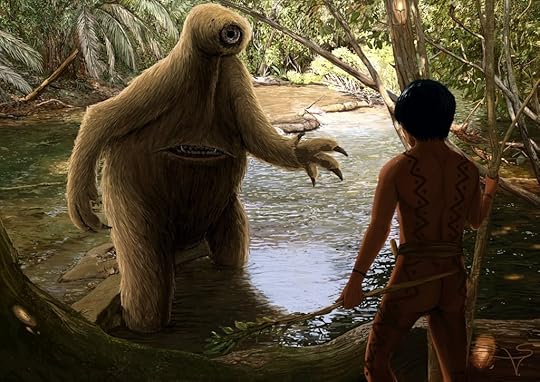
According to Brazilian stories, the Mapinguari was once an Amazonian shaman who discovered the key to immortality. He angered the gods and was punished, forcing him to wander as a hairy beast for the rest of his long days. But what is this strange creature?
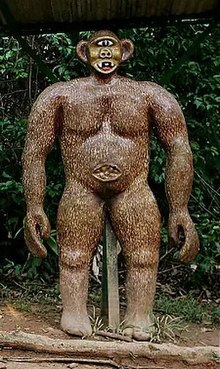
This creature has been described as a primate with a thick body. It would walk on two legs, had a flat snout and robust claws. When it would rear up to its full height, it would emit an extremely foul odor.
It sometimes is described to have a single eye in the center of its forehead – like a Cyclops and a mouth in its abdomen. Historians note that the single eye appears predominantly in older legends and has been lost as time progressed.
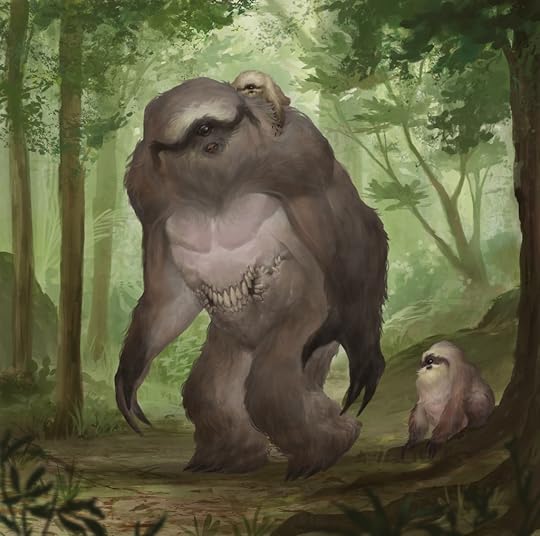
The creature is said to walk bipedally, but it is often unsteady. While it looks large and intimidating, the animal feeds on the vegetation of the forest it lives in – such as bacaba and babassu palms.
The animal is known to scream and shriek. Its name is actually derived from this. Mapinguari is usually translated as “the roaring animal.”
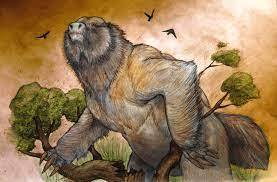
Megatherium is a genus of extinct ground slots that lived in South America from the Pleistocene to the Holocene (400,000 to 8,000 years ago). These animals grew up to 4 m and coexisted with the first human colonists in the Americas.
Megatherium was a giant ground sloth with a long thick coat that was used as protection in the colder climates of the last glacial period. This animal had a large barrel-like body and would be able to switch between quadrupedal and bipedal movement.
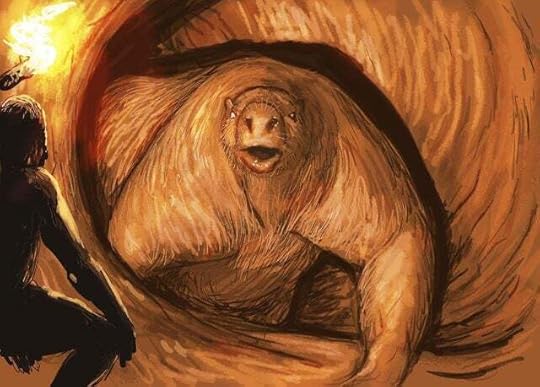
Much like the Mapinguari, Megatherium has a long, shaggy coat. It has a robust body and can move between two and four legs. The face of both creatures is squat, with Megatherium ending a large nose. The long claws on its hands are another clue that these animals are linked.
The large scythe-like claws found within the family are sloths are fairly unique. Yet they appear in almost every description of the Mapinguari. These large claws were used in ground sloths to pull branches toward the creature for feeding. Most likely the same could be said for the Mapinguari.
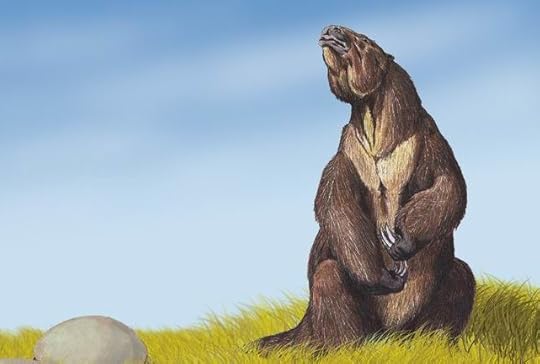
Often the Mapinguari is depicted with a second mouth on its stomach. This could have been mistaken for the large muscles that help make up the body. Giant sloths would have had giant pectoral and abdominal muscles. These may have been seen through the shaggy fur.
When the first humans encountered these large animals, it could have been mistaken for a close maw on the stomach.
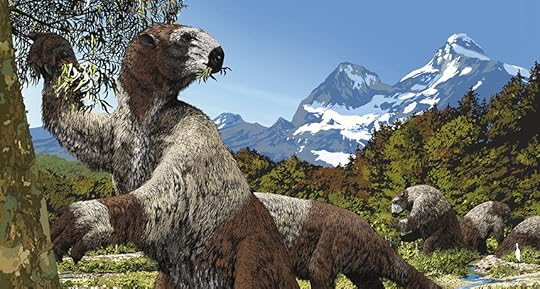
However the legend of the Mapinguari came about, these creatures are fascinating. If you would like to learn more about fossil sloths, check out @slothgirlmel on Twitter!
Sources:
https://cryptidz.fandom.com/wiki/Mapinguari
https://www.baltimoresun.com/news/bs-xpm-1995-01-13-1995013206-story.html
H. Gregory McDonald, Gerardo de Iuliis: Fossil history of sloths. In: Sergio F. Vizcaíno, WJ Loughry (Ed.): The Biology of the Xenarthra. University Press of Florida, 2008, pp. 39-55.
Bell, C. M. (March 2002). “Did elephants hang from trees? – the giant sloths of South America”. Geology Today. 18 (2): 63–66.
Fiedel, Stuart (2009). “Sudden Deaths: The Chronology of Terminal Pleistocene Megafaunal Extinction”. American Megafaunal Extinctions at the End of the Pleistocene. Vertebrate Paleobiology and Paleoanthropology. pp. 21–37.
January 24, 2022
The Mothman
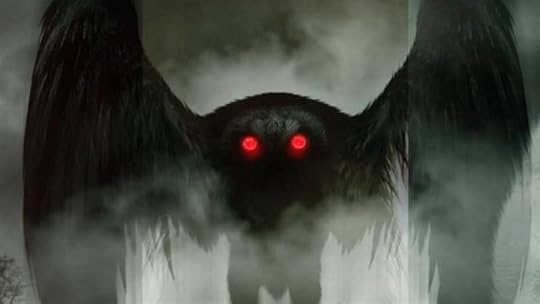
This creature was first spotted in November 1966 in Clendenin, West Virginia. A group of gravediggers looked up and noticed a massive figure moving rapidly from tree to tree. They described the creature as a “brown human being.”
A few days later, in Point Pleasant, WV, two couples noticed a white-winged creature about six or seven feet tall standing in front of a car they were sitting in. They say the beast had bright red eyes and a wingspan of ten feet. It appeared to be trying to hide from the lights of the car. They said it screeched at them and flew quickly but was clumsy on the ground.
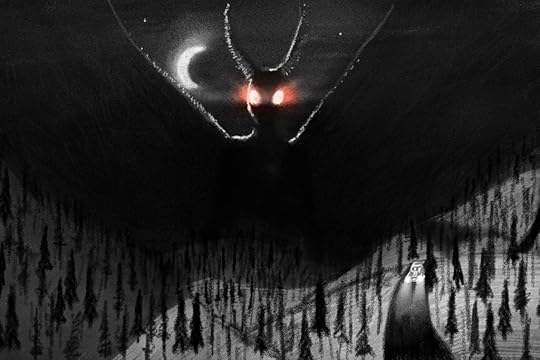
Sitings continued in West Virginia until the collapse of the Silver Bridge that connected Pleasant Point, WV to Kanauga, OH. It was the first eye-bar suspension bridge of its type in the US. It collapsed at rush hour on December 15, 1967, resulting in 31 vehicles falling into the river. 46 people were killed.
Many people take the Mothman sitings as a warning of the imminent disaster. After the bridge collapsed, Mothman disappeared.
So, is Mothman a local legend or is it a case of mistaken identity?
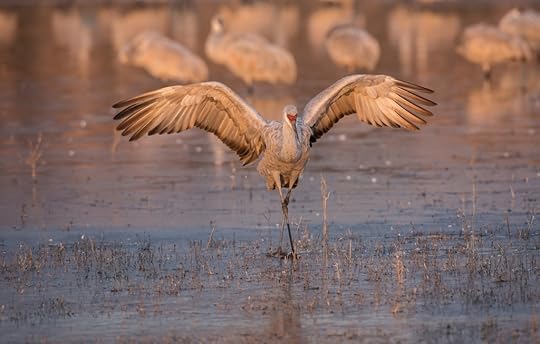
Dr. Robert L. Smith, an associate professor of wildlife biology at West Virginia University, was the first to connect Mothman to the less mystical – the Sandhill Crane.
Sandhill Cranes live commonly along the Nebraska Sandhills on the American Great Plains. They average about five feet in height with red foreheads, white cheeks, and long dark, pointed bills. Their wingspan can average up to 6.5 ft.
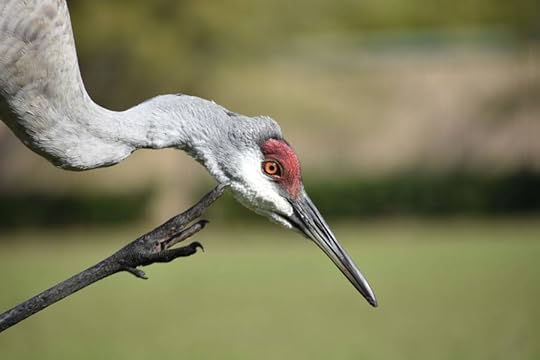
These cranes frequently give loud, trumpeting calls and can be heard from a long distance. Their large wingspan makes them very skilled soaring birds, similar to eagles and hawks. They are migratory birds, flying south each winter. They typically flock in groups of over 10 thousand birds.
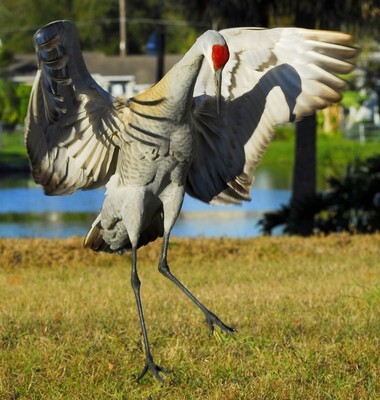
So, how did a Sandhill Crane become mistaken as Mothman in West Virginia?
The explanation is compelling, given the number of early reports describing the creature as “bird-like.”

It was theorized this crane was deformed- possibly residing in the “TNT area.” This area was given to a series of nearby bunkers that were used to manufacture munitions during WWII. The bunkers leaked toxic materials into neighboring wildlife and affected their health.
This particular bird also would have been off its regular migratory path. Such a large animal with deformed features would have further confused locals. It is no wonder legends sprung up around it!
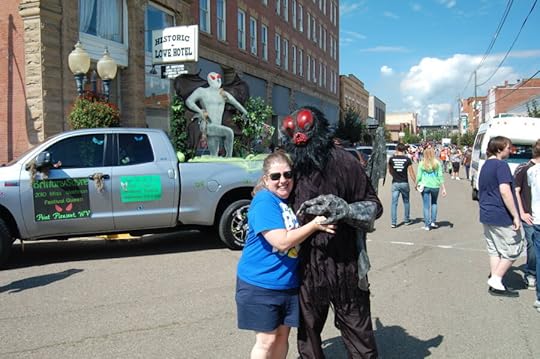
Whether Mothman is a legend or a Sandhill Crane, Mothman can still be seen today in Point Pleasant at the historical museum and in the form of a 12-foot chrome statue with massive steel wings and red eyes.
A festival is held every year for the enjoyment of locals and tourists. The September attraction is one of America’s strangest legends.
Sources:
Palma, Bethania. “Mothman About Town”. Snopes.com. Snopes.
Associated Press (December 1, 1966). “Monster Bird With Red Eyes May Be Crane”. Gettysburg Times.
“Couples See Man-Sized Bird…Creature…Something”. Point Pleasant Register. Point Pleasant, WV: WestVA.Net, Mark Turner. November 16, 1966.
https://allthatsinteresting.com/mothman
“Sandhill Crane Identification, All About Birds, Cornell Lab of Ornithology”. http://www.allaboutbirds.org.
January 17, 2022
The Kappa
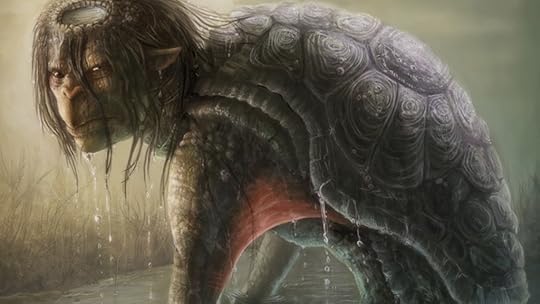
A Kappa is an amphibious demon found in traditional Japanese folklore. They are typically depicted as green, humanlike beings with webbed hands and feet and have a turtle shell on their back. The depression on their head holds water and if liquid is lost, they are severely weakened.
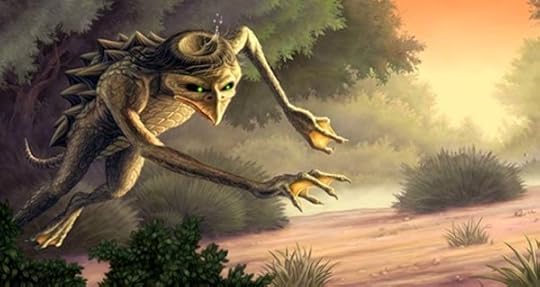
The name kappa is a contraction of the words kawa meaning river and wappa meaning child. The creature has also been called kawaso meaning otter and dangame meaning soft-shelled turtle suggesting an outward resemblance to these animals. The name komahiki or “steed-puller” refers to its reputation to dragging away horses.

Kappas are said to be roughly humanoid and the size of a child, living in ponds and rivers around Japan. Even with their small size, they are physically stronger than a grown man.
These creatures are seen as troublemakers or tricksters. Their actions range from spying to drowning people, kidnapping children, and eating human flesh. People will often give cucumbers to the water demon to mollify the kappa.
But what inspired this strange creature?
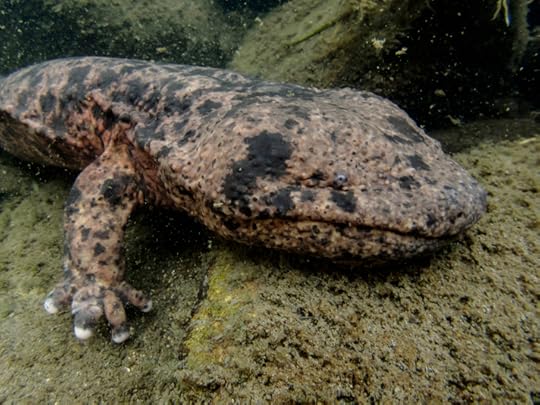
The Japanese Giant Salamander is a species of fully aquatic salamander endemic to Japan. These creatures grow around 1.5 m in length. It is the third-largest salamander in the world behind the Chinese and South China giant salamander.
The skin of the animal is typically a mottled brown and black. However, due to its aquatic lifestyle algae often covers the body – making them appear green. The coloring of the skin along with distinctive warts provide camouflage. The animal has a mouth that extends across the width of its head and can open the width of its body.
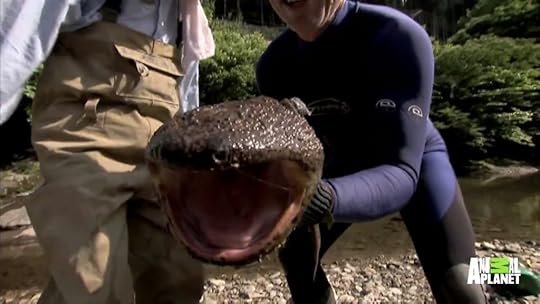
Japanese giant salamanders live only in streams with clear, cool water. Due to its large size and lack of gills, it is confined to flowing water where oxygen is abundant. It breached the surface periodically to breathe but spends most of its time hiding in the stream bottoms.
Adults feed mainly off freshwater crabs, frogs, and fish. It has a slow metabolism and can go weeks between meals. Japanese giant salamanders are known to be aggressive and grab its prey with its powerful jaws. With its poor vision, the animal could mistakenly have grabbed hold of an unsuspecting swimmer, causing a drowning.

There are several things that can tie Kappas and the Japanese Giant Salamanders together. With their size and habitat, they could certainly surprise an unsuspecting traveler!
Sources:
https://www.thedodo.com/mythical-monster-animals-814513925.html
Ashkenazi, Michael (2003). Handbook of Japanese Mythology.
Shamoon, Deborah (2013). “The Yōkai in the Database: Supernatural Creatures and Folklore in Manga and Anime”.
The Encyclopedia of Reptiles and Amphibians. Facts on File Inc. 1986.
Japanese Giant Salamander”. Smithsonian National Zoological Park. 2016.



